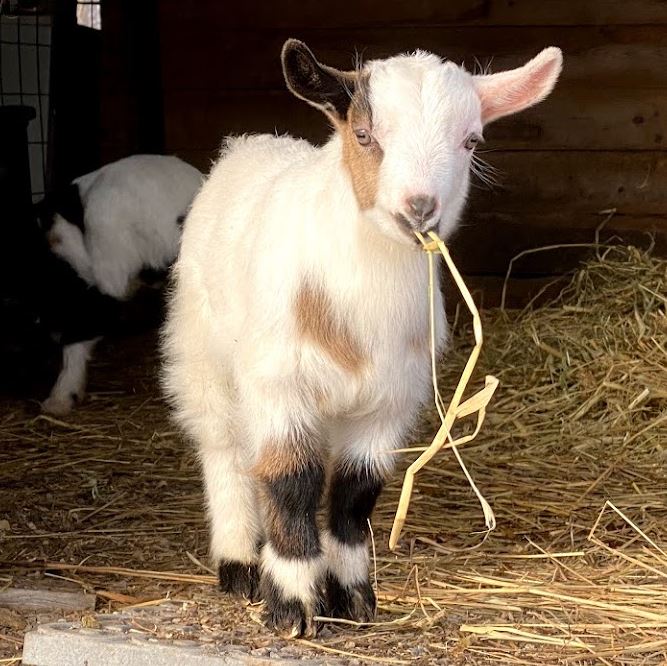If you’ve been following along on our adventures for the past 20 years you know horses are my first love and I’ve had other smaller livestock come and go throughout the years. My last big herd were alpacas. I’m not going to lie, I’m kind of happy I don’t have them anymore. I’ve got 2 fiber boys left and they will be my last!
With the horses living on a track system it leaves a lot of pasture land open on my property that screams, PUT SMALL RUMINANTS ON ME! if alpacas are no longer an option what is my newest choice and why?
Myotonic Goats!
- Allergies! – My main reason why I chose goats over sheep is due to my own allergies. I’m terribly allergic to sheep and break out in hives if I’m around them or handling them for any length of time. Therefore, no sheep for me!
- Fencing/Pasture – Goats are notorious when it comes to destroying things. There often isn’t a fence out there the average goat cannot escape from. I wanted to get a livestock that could live within my current fence I had up for the alpacas. Fence that I currently have is, field fence, hog panels, goat panels, rotational electric netting. Myotonic goats tend to freeze when they are overly excited so extreme jumping or climbing skills is not quite in their wheelhouse
- Pasture – My farm is 11 acres of which 5 of it is mowed and fenced pasture. Goats don’t care about the fancy groomed pastures I have. They are not grazers. They are browsers. What’s the difference? Horses graze, they eat with their heads down to the ground and will eat grass right to the root. Goats browse. They eat head up and clear brush, trees, weeds etc. Since half of my property is totally wild goats are a good choice. Using the electric netting I’ve been having them clear away areas of the property I’ve never set foot on before! It’s like having an adorable landscaping crew.
- Size/Personality – I work a full time job with OnCall with insane hours and stress. the farm is my happy place and having livestock that makes me happy is most important. Goats were for some reason on my no-no list for years for some reason or another. After researching and visiting myotonic goats I finally took the plunge. What a great choice! Personalities like my hens, they are always at my feet, begging for cookies and I’ve got a few that are very social and don’t mind a bit of love. The few kidding’s I’ve had so far the mothers have been very easy to work with and no one has decided that ramming me was a good idea to protect their young. All in all they are a friendly goat!They aren’t an overly large goat and are smaller in size than they are in weight since they are a meat breed. Most of mine are around the 50-75lb weight and under 20″ at the shoulder. Small size makes them great for small acreage! Which means I have have more goats/acre than I can have with other livestock. I typically run 7-10 goats per paddock. paddock size is about 1/4 acre and I rotate that every week to new grazing. More on rotational grazing in another post.
- Survivability – Part of owning livestock is keeping them healthy. There are some breeds that make this job more difficult that others. Myotonic goats when managed appropriately tend to be less prone to parasitic infections, difficult births and poor mothering habits. This doesn’t mean I can slack on my husbandry skills but means I’ll have less time spend battling things like barber pole worm or coccidia than other breeds.


